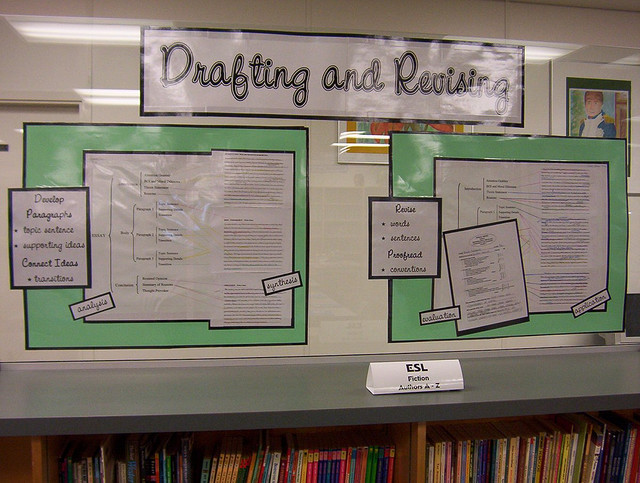Workshop Technology: Teaching Revision 11
How do you use technology in Creative Writing workshops?
During my AWP panel on workshopping, someone in the audience mentioned that a friend ran his workshops by having students submit all their critiques online beforehand, so that the writer could look them over and then use classtime to ask questions. I like this idea, though I also like how readings and opinions and questions change through conversation. In some ways it’s a belief in conversation that keeps me from throwing out most of the tenets of workshops altogether. But it’s also a belief in conversation, in part, that makes me so frustrated with the cone of silence.
I like the idea of students writing their critique letters before workshop and then revising them after workshop before sending them to the author–ideally. The reason I haven’t done this is time. I read and evaluate all of my students’ critique letters. I’m also thinking about the students’ time. Perhaps I’ll reconsider.
I have been using technology so far mainly to have students write “notes” about the revisions they do to their work, to detail the choices they made and why they made them. I check these notes daily and make comments and ask questions. I have been using technology, in other words, to get more at process.
I’ve been thinking about other ways technology can be integrated. I’ve shown movies, of course, and readings and interviews. I’m more interested not in outside content, but in student participation. I teach an online course where in-line commenting can be done as in Google Docs, so that the author can see multiple people’s questions, comments, and suggestions at once. I once tried to co-write a book with someone using Google Docs, where we could see changes happen instantaneously. This could probably be utilized in the classroom, whether by the class as a whole or in partners or small groups, so that students might learn from each other’s moves.
Years ago I watched a friend teach juxtaposition through a series of slides, each with two photos. One of the photos would change with each slide. “What’s the story here?” he asked. I still teach juxtaposition this way.
I went to a flipped classroom seminar once and thought about what it would be like to do the writing in class and the workshopping outside of class.
I like an exercise where students record themselves reading their stories out loud and submit those recordings online–though this is mostly a way to check that they did it. The changes they make from reading aloud, of course, are a valuable lesson in revision.
I remember that Robert Olen Butler once recorded himself writing a story–I wonder what students would learn about their process from recording themselves writing and watching those recordings. I’m sure it would be excruciating.
I have recorded lectures on various elements of fiction and on novel-writing that I’ve used for online courses, and I’ve thought about making those available to face-to-face classes. So far, though, I’ve opted to teach those same things in person–again because the conversation adds value to the lessons.
Using a program like Jing might work, where feedback can be seen both on the page and explained vocally.
What if students made powerpoint presentations to show the various stages a story went through?
I’ve had a professor demonstrate line edits in real time using a projector.
I do a lot of revision exercises where partners or the class highlights or underlines or boxes or whatever various things in a story: such as inside versus outside story, or abstractions, or recurring sounds. That could probably be done in Google Docs, if everyone had a laptop.
Students might do podcasts discussing their stories, as a way to make them think about presenting their work to an audience.
Etc. What do you do? If you’d like to contribute, you can get me as always at m [dot] salesses [at gmail etc.].

